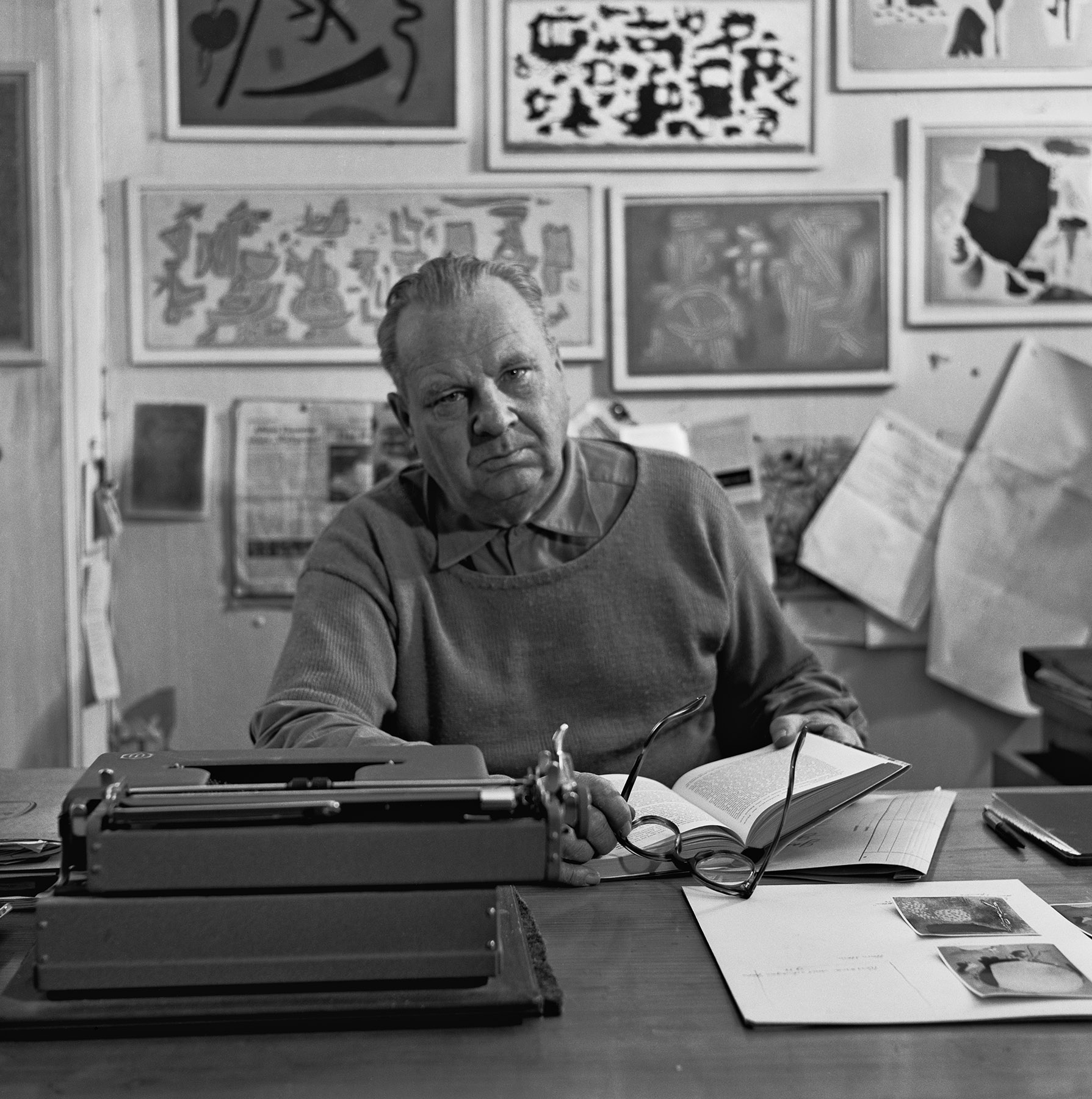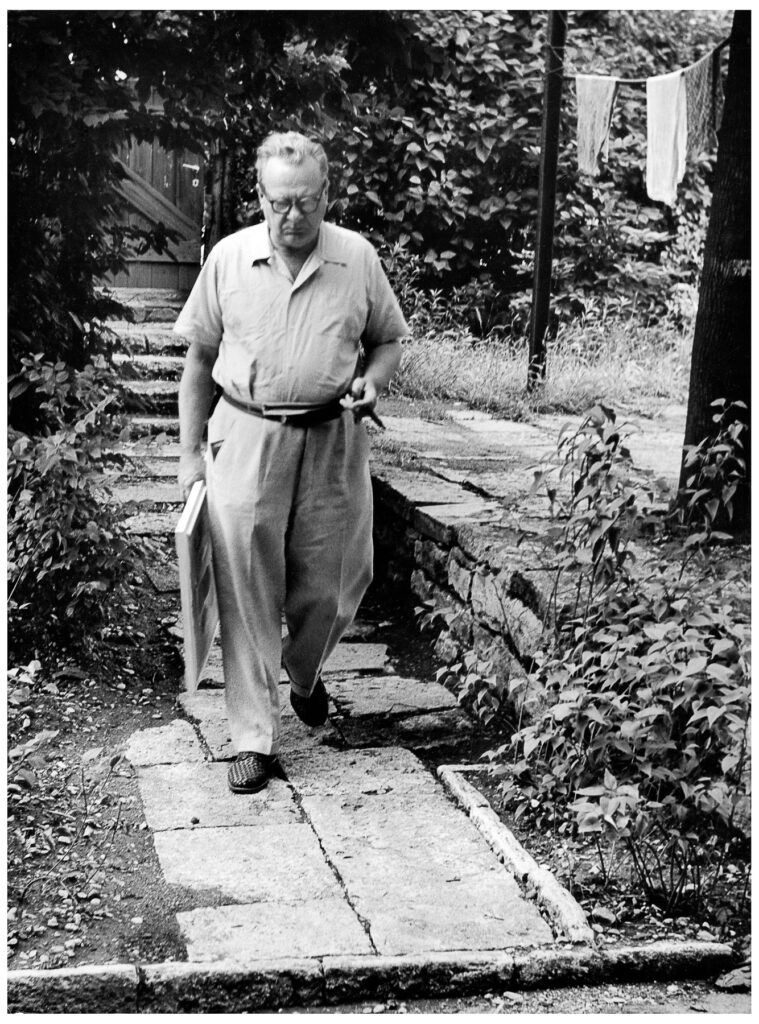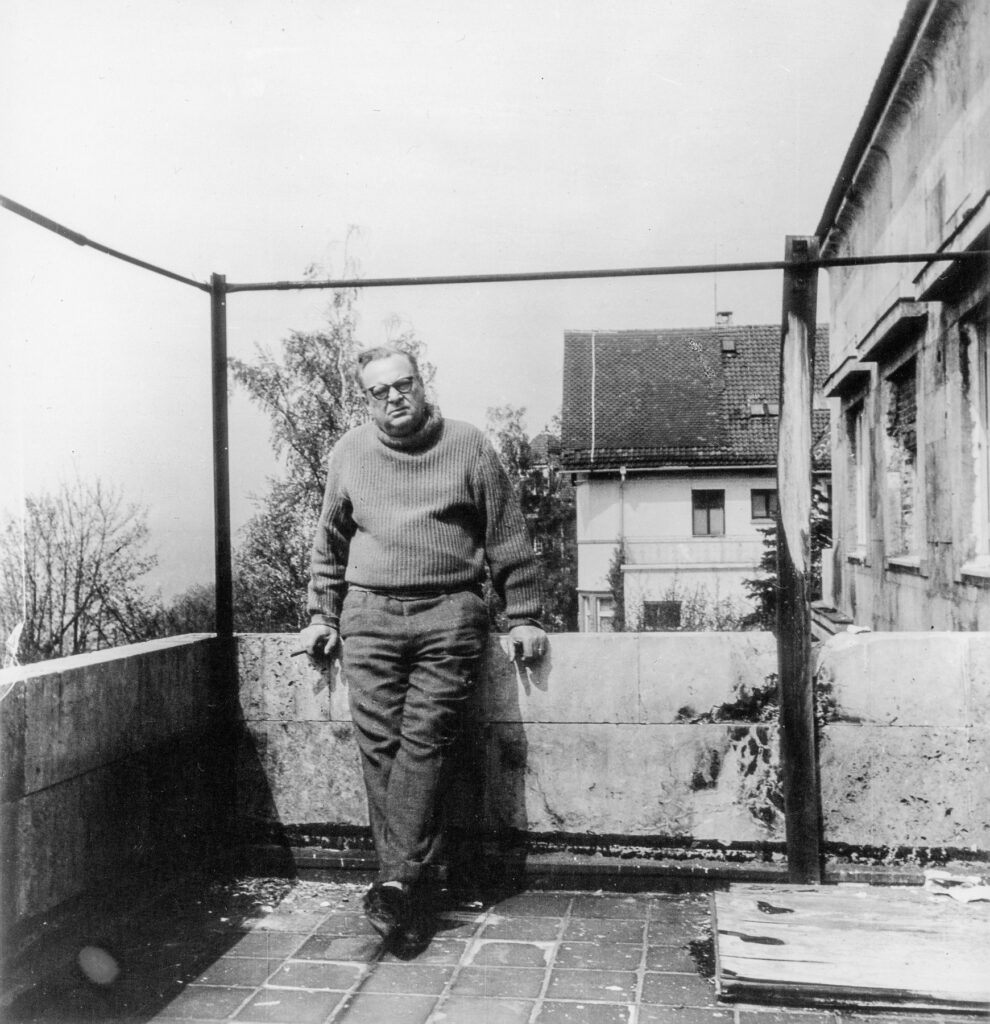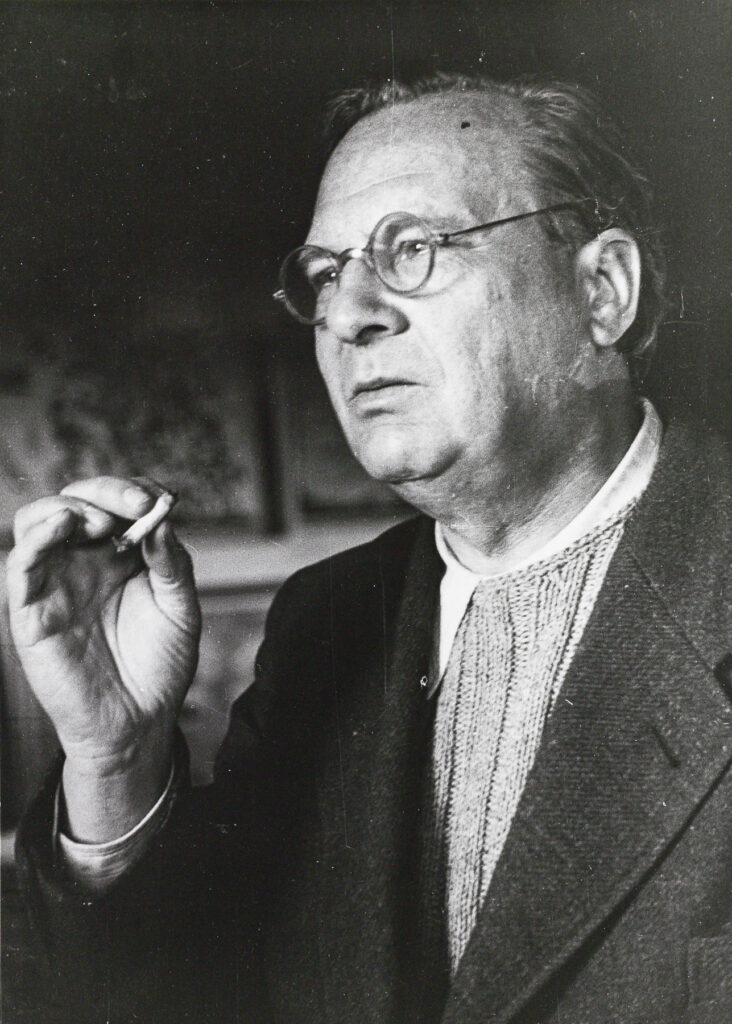1946
A short autobiography written by Baumeister in 1946 makes it clear that his work began with a search for the right form, involving impressionistic and Cézanne-esque experiments, before he found his own path after the First World War:
until 1907 naturalist, 1907 to 1909 impressionist, 1910 to 1914 post-impressionism; 1919 to 1930 constructivism; 1924 to 1929 sports pictures; 1920 to 1935 abstractions of sports pictures; 1935 to 1937 ‘picturesque compositions’; 1937 to 1938 non-representational painting (ideograms); 1939 series of compositions with floating forms; 1942 elementary black-and-white compositions and relief painting; 1940 pictures with coloured glazes; 1942 black-and-white pictures and relief pictures […]
1946
Baumeister’s autobiographical self-portrayal for the Sunday supplement of the Stuttgarter Zeitung (21 September 1946) introducing the Stuttgart Academy of Fine Arts and its teaching staff (including Hermann Sohn, Hermann Brachert, Rudolf Yelin, Otto Baum and Fritz Steisslinger).
willi baumeister
born in stuttgart in 1889. studied at the stuttgart art academy under hölzel, but was essentially self-taught. also worked as a stage designer, architectural painter, typographer, painting technician conducting research, and writer. exhibitions in major cities in cultural countries, including representative collections in berlin, paris, london, milan, and rome. participated in exhibitions in all cultural countries, including the usa. pictures in almost all german museums, the national gallery in berlin, etc., in foreign museums, in domestic and foreign private collections. state prize of germany 1930, french prize 1931 in bordeaux. professor at the art school in frankfurt am main 1928. abrupt dismissal on 31 march 1933.
until 1907 naturalist, 1907 to 1909 impressionist, 1910 to 1914 post-impressionism; 1919 to 1930 constructivism; 1924 to 1929 sports pictures; 1920 to 1935 abstractions of sports pictures; 1935 to 1937 ‘picturesque compositions’; 1937 to 1938 non-representational painting (ideograms); 1939 series of compositions with floating forms; 1942 elementary black-and-white compositions and relief painting; 1940 pictures with coloured glazes; 1942 black-and-white pictures and relief pictures; 1943 illustrations for ‘gilgamesh’, ‘saul’, “esther” and shakespeare’s ‘the tempest’; 1944 writing of the manuscript ‘the unknown in art’. publications: monographs in various languages, catalogues of collective exhibitions, articles in internationally renowned art magazines and newspapers. currently exhibiting in the usa.
1955
Shortly before his death, Willi Baumeister put this biography down on paper:
Willi Baumeister
Professor, painter, stage designer
Stuttgart‑O[st], Gerokstraße
Born on 22 January 1889 in Stuttgart – married.
Apprenticeship as a painter, art academy; self-taught.
Professor at the art school in Frankfurt am Main until 1933 and at the Academy of Fine Arts in Stuttgart since 1946; defamed as degenerate during the Hitler era. Works in German and foreign museums, e.g. Amsterdam, Paris, New York.
Publications:
Das Unbekannte in der Kunst (The Unknown in Art), 1947
Will Grohmann, monograph, 1952



